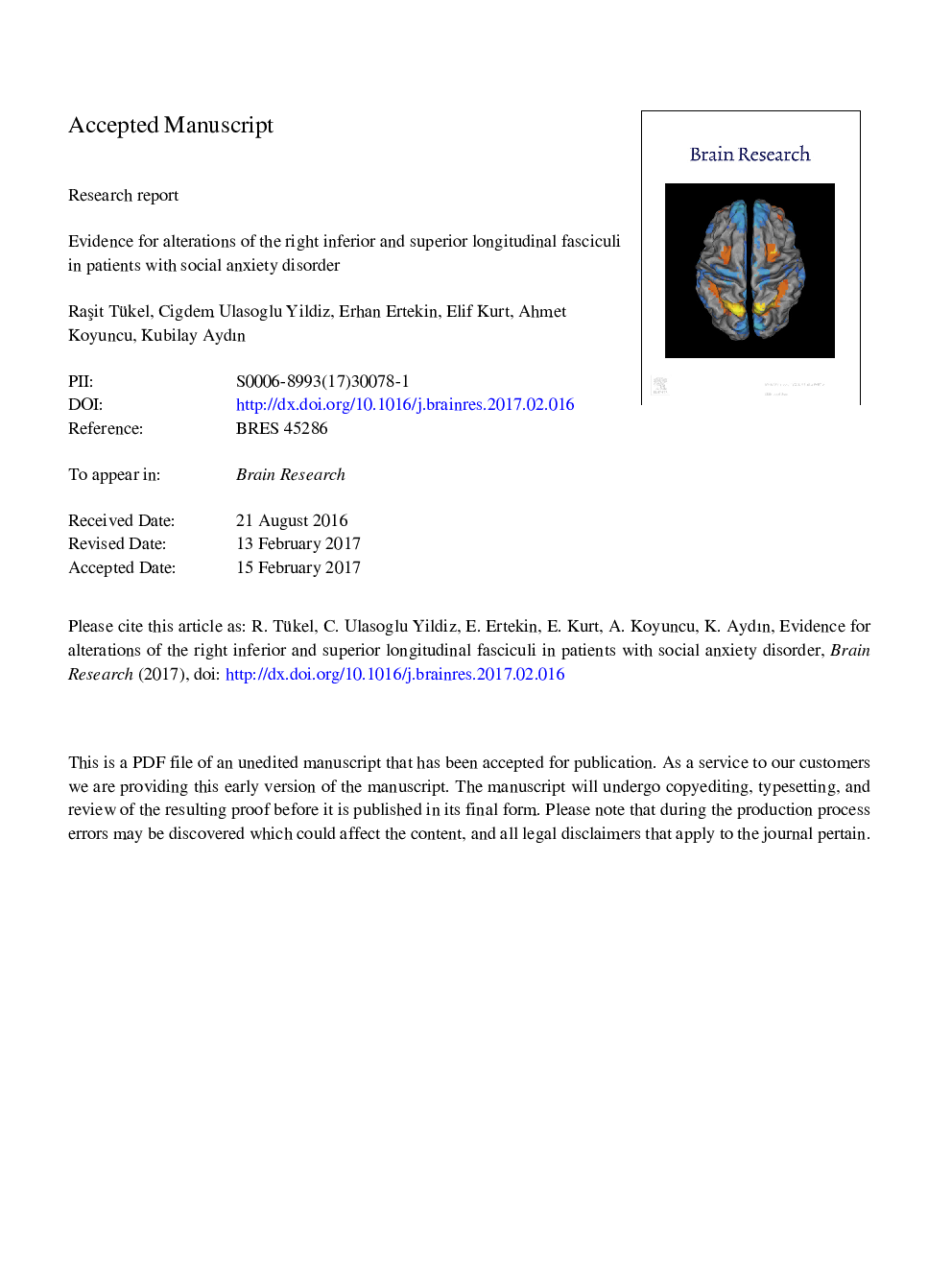| Article ID | Journal | Published Year | Pages | File Type |
|---|---|---|---|---|
| 5736764 | Brain Research | 2017 | 39 Pages |
Abstract
The aim of our study was to detect white matter (WM) regions being involved in the pathophysiology of SAD. We applied diffusion tensor imaging in 22 consecutive adult patients (11 women and 11 men) with SAD and 22 age and sex-matched healthy control subjects. We examined white matter (WM) alterations between the patients with social anxiety disorder (SAD) and healthy controls by a whole-brain analysis. We found that fractional anisotropy (FA) was reduced in patients with SAD compared with controls in the temporal part of right inferior longitudinal fasciculus (ILF) and the occipito-temporal part of the right superior longitudinal fasciculus (SLF). We also identified that in these regions FA was negatively correlated with the severity of anxiety. Our results suggest that the lateral temporal and occipito-temporal WM microstructure plays a role in mediating social interactions, and a pattern of WM abnormality in the right ILF and SLF may be implicated in the pathophysiology of SAD plausibly through leading to deficits in face processing mechanisms.
Keywords
Related Topics
Life Sciences
Neuroscience
Neuroscience (General)
Authors
RaÅit Tükel, Cigdem Ulasoglu Yildiz, Erhan Ertekin, Elif Kurt, Ahmet Koyuncu, Kubilay Aydın,
